Some Magic players derive enjoyment from honing a deck to the perfect 75, or crafting a strategy based on an arcane rule, or deploying a combo that instantly ends the game. Some want to count to twenty as fast as Goblinly possible, others want to trade haymakers in the red zone, and still others seek to lock the game down into a state of grueling attrition. But others want to tap out each turn to interact with their opponents, slam a beefy creature, and trade resources at a 1-to-1.2 ratio to eventually overwhelm their opponents.
The History of J
Circa 2000, “Junk” was the name for a deck archetype that ran metagame-targeting cards in the White/Black/Green triad—Vindicate, Gerrard’s Verdict, Pernicious Deed, etc.—backed up with a taxing element like Rishadan Port and Wasteland in the original and later Extended versions. It evolved out of earlier “PT Junk” decklists in Masques/Invasion Standard that used flexible answers to free up deckslots and counteract opponents’ strategies.
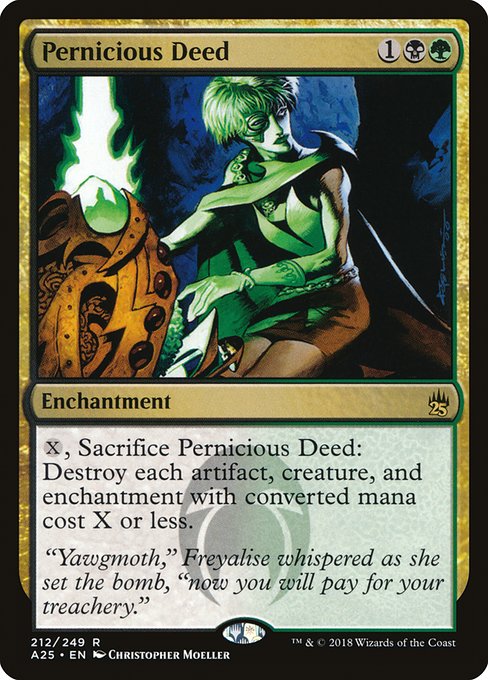
Where once players had to sideboard in narrow answers like Reverent Mantra and Seal of Cleansing, Junk pilots could run universal answers for whatever their opponent was packing in the main deck. With the printing of Vindicate and Pernicious Deed in Apocalypse, Junk players were able to answer anything their opponents threw at them. Shannon Krumick took a modified PT Junk list into Extended, where it became one of the decks to beat that season; Gerard Fabiano has the archetypal PT Junk list, which looks like an odd juxtaposition from our modern standards, but was positioned to undercut combo and control decks.
Keep in mind that this was the era when Trix was running roughshod over the format. The typical line of play was “end of turn, Vampiric Tutor for my combo, untap, combo out.” Junk was an underdog (albeit one that was perfectly positioned to counterattack common strategies) whose self-deprecatory name reflects that status. The thing about underdogs, of course, is that their stature puts them in a good place to go for the vitals.
From Junk to Jund
PT Junk lists had three primary components: resilient threats, disruptive spells, and creature lands. The original Junk decks were a “pile of junk” that ran the best cards in those roles without worrying about synergy. And then in 2008, Shards of Alara came along and introduced us to the shard of Jund. While the colors may be different, those three pillars of Junk decks came to define modern (and Modern) Jund decks. PT Junk is essentially a find-and-replace model for Modern Jund—in place of Duress, Jund runs Thoughtseize; in place of Wild Mongrel, Jund runs Tarmogoyf; in place of Treetop Village, Jund runs Raging Ravine, etc.
Like Junk before it, Jund is a quintessentially “fair” deck that overstresses your opponent’s resources and hopes to come out on top by playing value-packed, sticky threats like Huntmaster of the Fells, ramp like Ignoble Hierarch (and, at one point, Deathrite Shaman), and Swiss army knife answers—Thoughtseize as a prophylactic, Lightning Bolt and Maelstrom Pulse as board removal, and Kolaghan’s Command as a maindeckable answer to multifarious strategies.
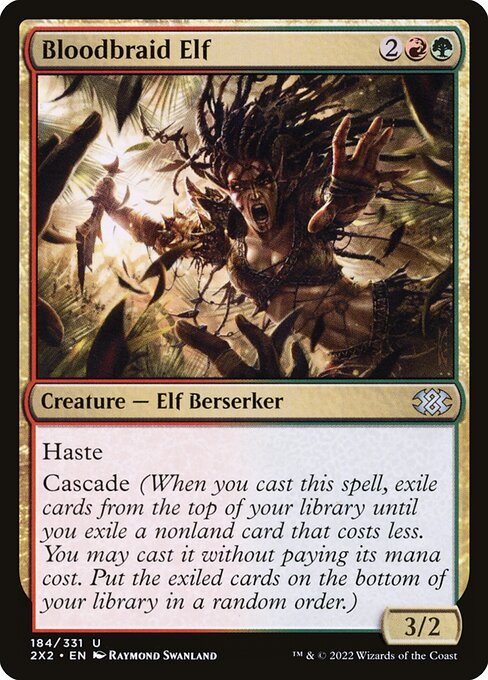
There’s something very resonant in “Jund” being one letter off from “Junk”—while they differ in color a bit, they feel very taxonomically similar. “Jank” was a mid-90’s term for something suspect or sketchy—most likely derived from “junk/junky” (c.f. Ice Cube’s “Really Doe”)—and “Jank” became a common way to describe cards that were underpowered but plausibly playable. There’s a kind of pride in describing your deck as “Jank” or “Junk,” a kind of braggadocio that says “Yeah, my deck is kind of junk—but I’m still winning with it.”
Jund, though, is a false cognate for “Junk”—it has nothing to do with “jank” or “junk,” but is instead Wizards’ self-applied name for the Red/Green/Black triad, after Shards of Alara’s Jund shard. But while the name may only be superficially similar, the strategy is all but identical. Indeed, the Rock (a Green/Black value-based deck built around Deranged Hermit and Phyrexian Plaguelord), Junk, and Jund are all similar in ethos—build a pile of good cards that have generically decent matchups against everything. They have their proponents (of which I am one) and their detractors, both of whom are given to saying “When in doubt, Jund ‘em out,” as popularized by Loading, Ready, Run.
These decks are pillars of the game; a good barometer of format health is “is Jund a reasonable deck?” Jund is an honest deck that keeps formats honest, an enforcer that lurks in the background of every deck building session. Every deck I build for Modern has to answer the question “does this beat Jund?”—sometimes, if I’m feeling down on the deck, “does this even beat Jund?”
J Standard J
Standard Jund back in 2010 was a beautiful creation. The threats hit hard and were often multiple threats in one: Sprouting Thrinax, Bloodbraid Elf, Broodmate Dragon. The combination of Lightning Bolt and Maelstrom Pulse kept the board clear so that your threats could get in the red zone. Raging Ravine was both mana-fixing and Wrath-recovery—and could take out Jace, the Mind Sculptor.
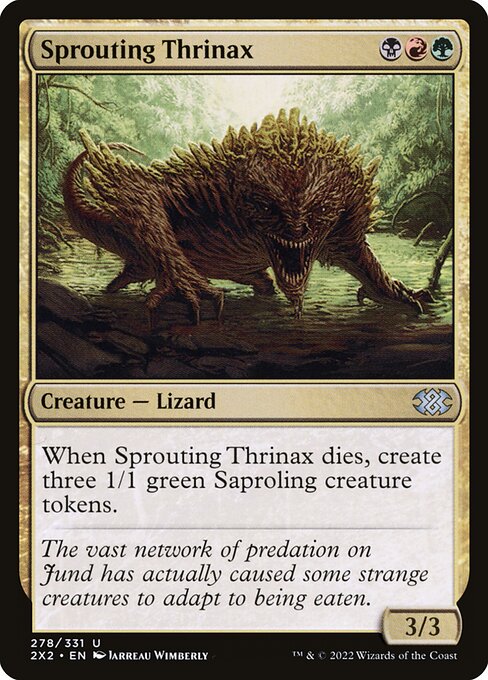
So the question becomes: can we replicate Jund in post-rotation Standard? Future Standard lacks the all-purpose removal that has allowed Modern Jund to succeed—no Assassin’s Trophy or Abrupt Decay or Kolaghan’s Command in Standard right now—but we do have Binding the Old Gods which, while expensive, serves a similar role. It’s not quite Maelstrom Pulse, but it’s an exceptional card, and only likely to get better once we head into the new Standard without Eldraine’s hyper-efficient cards.
Standard rotates on September 17th with the release of Innistrad: Midnight Hunt, and we lose some heavy hitters: Kroxa, Titan of Death’s Hunger, Fabled Passage, Scavenging Ooze, and most importantly, the core of the current Jund Standard deck: Adventures. The host of Eldraine Adventure cards—Bonecrusher Giant, Lovestruck Beast, and sometimes Murderous Rider—defined the color triad for the last two years and are pure Jund cards, presenting a reasonable creature backed up with a cheap spell.
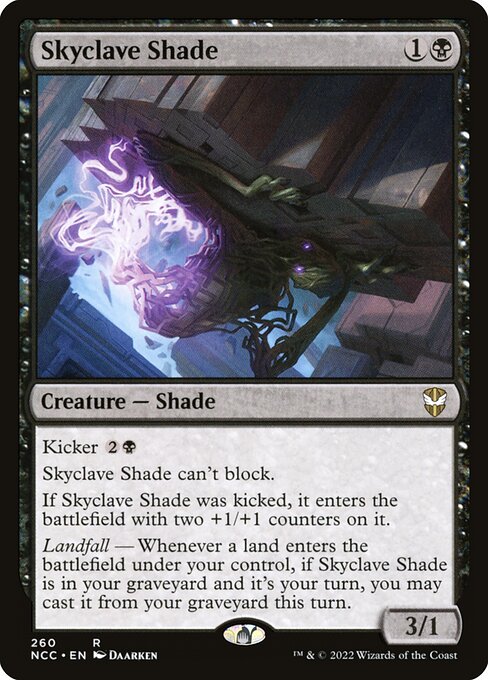
We have creature lands in Adventures in the Forgotten Realms, of which Hive of the Eye Tyrant is the best in our colors. Plus we have Skyclave Shade, a recursive threat who scales up over the course of the game, and Ebondeath, Dracolich as our returning creatures. We may not have Tarmogoyf, but Red and Green give us a whole host of massive threats, of which the best are probably Goldspan Dragon and Vorinclex, Monstrous Raider. I’ve also been experimenting with Ranger Class and Werewolf Pack Leader, both of which are promising. The closest Tarmogoyf analogue is actually our Death’s Shadow analogue: Scourge of the Skyclaves. Scourge requires more management than the Goyf, but it’s the biggest, cheapest beater we have access to, and can turn into The Abyss awfully quickly.
Witherbloom Command is incredibly close to playable, but without a way to exploit the life drain or land regrowth, it’s relegated to the sideboard. Lolth, the Spider Queen meanwhile, has been over performing as a pseudo-Phyrexian Arena who can also pop out a couple of creatures in a top deck war. Zariel, Archduke of Avernus serves a similar role, and is fantastic at closing a game out in conjunction with Skyclave Shade, or turning on a Werewolf Pack Leader out of nowhere. The real benefit of playing Jund is getting to play Valki/Tibalt. He’s playable enough currently, and I expect him to be dominant once we lose Throne of Eldraine, Ikoria, and M21. As a small disruptive creature that can temporarily snipe a threat from an opponent and has the corner case of a card advantage engine at seven mana, he’s perfect for Jund.
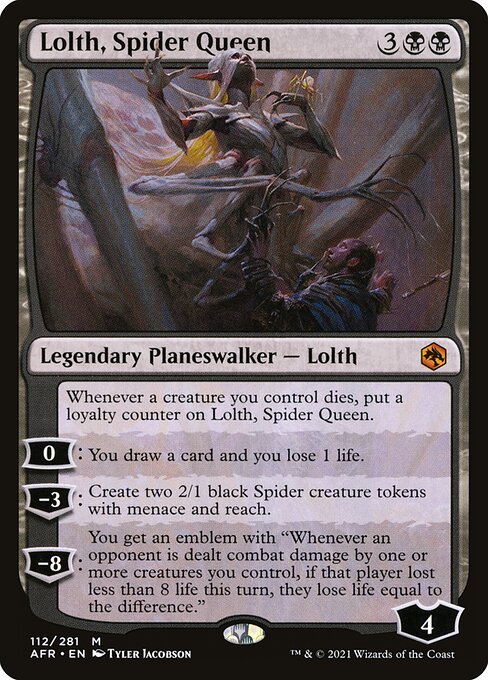
Mana is an issue—we’re trying to run mana fixing and creature lands, so we may run into some hiccups along the way. With rotation, we lose the Temples and Fabled Passage and are reduced to playing Necroblossom Snarl. Hopefully, Innistrad brings a decent land cycle to Standard to replace what we lose, because the Pathways don’t cut it when you’re trying to scrounge up GG on turn two and 2BB on turn four—hence the necessary evil of the Snarl. Even then, it’s difficult to have enough Forests/Swamps to turn the Snarl on, so it’s an immediate cut as soon as we have a suitable replacement.
J to the Decklists
This leaves us with here post-rotation:
Fall 2021 Standard Jund
| Creratures (23) 4 Valki, God of Lies 4 Skyclave Shade 2 Scourge of the Skyclaves 4 Werewolf Pack Leader 3 Kazandu Mammoth 2 Ebondeath, Dracolich 3 Goldspan Dragon 1 Vorinclex, Monstrous Raider Planeswalkers (3) 2 Zariel, Archduke of Avernus 1 Lolth, the Spider Queen Spells (10) 4 Bloodchief's Thirst 4 Binding the Old Gods 2 Mortality Spear | Lands (24) 4 Necroblossom Snarl 3 Darkbore Pathway 2 Blightstep Pathway 1 Cragcrown 2 Hive of the Eye Tyrant 6 Snow-Covered Forest 3 Snow-Covered Mountain 3 Swamp Sideboard (15) 3 Culling Ritual 4 Burning Hands 2 Sphere of Annihilation 4 Ray of Enfeeblement 2 Witherbloom Command |
Alternately, we could go somewhere deeply strange with Jund, as built around the minor Legendary theme that R/G has been playing into since Kaldheim. The addition of a mono-Legendary creature base lets us ramp out Tibalt with the help of Esika, God of the Tree and to find silver bullets with Kolvori, God of Kinship. The real centerpiece, of course, is Bard Class.
Here’s where I am with Legendary Jund:
Fall 2021 Legendary Jund
We lose Kroxa, unfortunately, but we still have a whole pantheon of interesting Gods and Legends. Turn two Bard Class into Arni Brokenbrow is a build-your-own-Questing Beast. Our mana is still iffy, but the addition of Kolvori and Esika swayed me to make this a base-Green deck that can (theoretically) cast The Prismatic Bridge. There’s also a minor Dungeon sub theme that may end being cut for being too slow, but it’s hard to resist running Ellywick at the very least.
Sarulf, Realm Eater is our Pernicious Deed, Binding the Old Gods is our universal out, and we have a variety of one-ofs to find with Kolvori and Ellywick. Instrument of the Bards, while thematically perfect, is sadly too slow and low-impact. Tutoring to hand for four mana just doesn’t do enough when most of our Legendary creatures are clustered at the three-mana mark. Aether Vial or Birthing Pod this is not—hell, it’s closer to Mercadian Lift than it is to Yisan, Wandering Bard. This isn’t the old, powerful Jund that’s been a pillar of Modern—this is a stellar “Bronze to Gold” Arena climber.
Standard has stagnated, frankly—between COVID time dilation and the developmental mistakes of 2019/2020, it feels like we’ve been slamming Embercleave and Brazen Borrower for a decade. I’m ready for a rotation to refresh the format and bring with it new options for old archetypes. Jund is, at this point, a well-loved old friend; like old friends, the pleasure of revisiting it is seeing how it’s changed and grown while still remaining familiar and supportive.
A lifelong resident of the Carolinas and a graduate of the University of North Carolina, Rob has played Magic since he picked a Darkling Stalker up off the soccer field at summer camp. He works for nonprofits as an educational strategies developer and, in his off-hours, enjoys writing fiction, playing games, and exploring new beers.

